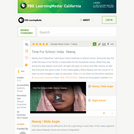
In this Wide Angle video segment, a young Indian girl talks about her life, family, education and daily routine.
- Subject:
- Arts and Humanities
- Material Type:
- Lecture
- Provider:
- PBS LearningMedia
- Provider Set:
- Teachers' Domain
- Date Added:
- 10/08/2008

In this Wide Angle video segment, a young Indian girl talks about her life, family, education and daily routine.
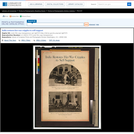
Exhibit poster showing two scenes in which disabled veterans learn trades. Poster captions: Automobile mechanics is a popular trade with the disabled men at Queen Mary's Technical School, Bombay, India ; The loss of limb does not prevent the injured soldiers of India's forces from becoming good carpenters. Exhibit of the Red Cross Institute for Crippled and Disabled Men and the Red Cross Institute for the Blind.
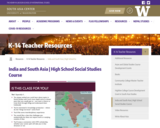
India and South Asia: From Area Studies to Ethnic Studies
Course design by Rachel Heilman, Issaquah High School.
Developed with the support of Sunila Kale (Associate Professor of International Studies) and the South Asia Center (Henry M. Jackson School of International Studies, University of Washington), with funding from the U.S. Department of Education National Resource Centers Program.
Dear Colleague,
I hope you are able to implement some version of this course at your institution! I have it aligned to Washington State Social Studies Standards, but it is right in line with Common Core-driven expectations and should fit well with any state’s standards. This course also very much supports the new Washington Ethnic Studies Framework.
––Rachel Heilman, March 2022
Course Description
How can understanding a particular region both shape and enhance our understanding of ourselves and the world around us? As we gain knowledge, how do we both recognize and cross the political boundaries we see on maps? In this one-semester course we will use an interdisciplinary approach to examine India and wider South Asia as we work to conceptualize the ways people, power, geography, and the past shape the region. For the purposes of this course South Asia will include Bangladesh, Bhutan, India, Maldives, Nepal, Pakistan, and Sri Lanka. In our role as global citizens we will also expand our inquiries to the web of connections between South Asia and our own individual and social identities.

WIP: This text takes six important variables that go into the making of Gujarat as a region: political, social, cultural, religious, economic and linguistic. These six variables are taken as ‘frameworks’ to explore the uniqueness of Gujarat as a region. There are various ways of understanding and interpreting Gujarat. This text seeks to interpret Gujarat through the framework of the above six variables. Through these variables, we shall try to understand the unique features, dynamics and characteristics of a region called Gujarat. It must be noted that this text is not a straightforward history of Gujarat. Rather, it is a way of interpreting Gujarat, its past and present by exploring different variables that makes Gujarat a unique region. In these chapters you will find multiple voices history, silent voices of society, cultural dynamics which have shaped Gujarat, political configurations and its relation to identity. Here you will find the contribution of the dynamics of Gujarati language in shaping the regional and cultural identity of this region. Finally, you will find here how the economic history has given Gujarat a particular slant. The author of this book is Dr. Fr. Sebastian Vazhapilly, SJ.

This course studies the interaction between law, courts, and social movements in shaping domestic and global public policy. Examines how groups mobilize to use law to affect change and why they succeed and fail. The class uses case studies to explore the interplay between law, social movements, and public policy in current areas such as gender, race, labor, trade, environment, and human rights. Finally, it introduces the theories of public policy, social movements, law and society, and transnational studies.

Survey of Indian civilization from 2500 BC to present-day. Traces major political events as well as economic, social, ecological, and cultural developments. Primary and secondary readings enhance understanding of this unique civilization, and shape and improve understanding in analyzing and interpreting historical data. Examines major thematic debates in Indian history through class discussion.

Everyday we are bombarded with the word “global” and encouraged to see globalization as the quintessential transformation of our age. But what exactly does “globalization” mean? How is it affecting the lives of people around the world, not only in economic, but social and cultural terms? How do contemporary changes compare with those from other historical periods? Are such changes positive, negative or simply inevitable? And, finally, how does the concept of the “global” itself shape our perceptions in ways that both help us understand the contemporary world and potentially distort it? This course begins by offering a brief overview of historical “world systems,” including those centered in Asia as well as Europe. It explores the nature of contemporary transformations, including those in economics, media & information technologies, population flows, and consumer habits, not through abstractions but by focusing on the daily lives of people in various parts of the world. This course considers such topics as the day-to-day impact of computers in Silicon Valley and among Tibetan refugees; the dilemmas of factory workers in the US and rural Java; the attractions of Bombay cinema in Nigeria, the making of rap music in Japan, and the cultural complexities of immigrant life in France. This course seeks not only to understand the various forms globalization takes, but to understand its very different impacts world-wide.
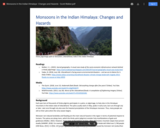
In this activity you will explore some of the natural hazards associated with the Himalayan monsoon as an impact on Hindu pilgrims on their holy pilgrimage through readings and videos and answering the questions listed. The purpose of this activity is to demonstrate an understanding of the hazard impacts of monsoon rains on mountain people in Uttarakhand, India.
*Note: This activity is related to the mapping project titled, "Yamuna: A Deep Mapping Project". This is the second activity and it is recommended that the activity "How Monsoons in Indian Himalaya are Formed" should be given to students first.

This course will expose students to tools and methods of analysis for use in assessing the challenges and dangers associated with nuclear weapons in international politics. The first two weeks of the course will look at the technology and design of nuclear weapons and their means of production. The next five weeks will look at the role they played in the Cold War, the organizations that managed them, the technologies that were developed to deliver them, and the methods used to analyze nuclear force structures and model nuclear exchanges. The last six weeks of the course will look at theories and cases of nuclear decision making beyond the original five weapon states, and will look particularly at why states pursue or forego nuclear weapons, the role that individuals and institutions play, and the potential for both new sources of proliferation and new consequences.
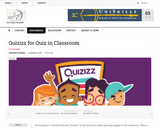
"Quizizz is a free tool. It works on any device: web browser, iOS, Android and Chrome apps. You can access hundreds of ready-made learning quizzes or create your own. Join as a teacher, pick a quiz, and use the code for a virtual room to give to your students."
The way you make a quiz, you host it and then you see them playing it on their mobile phones/tablets or laptops with the Scoreboard Seen Live on the Screen/Projector in the Class makes it a real happy classroom. The extra-edge comes with the Music that is being played by the App or the Website during the quiz.
The additional features about creating a quiz are more beneficial and good with the Quizizz. You can download an excel sheet from Quizizz and enter the questions as guided in this format. While using the desktop version, you can upload this .csv and the quiz is generated. Another excellent feature is to TELEPORT the questions from Pre-made quizzes. Click on teleport after cresting name of the quiz. On the right side of the screen you see that there are many quizzes opened and you can add a question to your quiz, just by clicking ADD.

This course, organized as a series of lectures, aims to provide an interdisciplinary view of the history and current climate of nuclear weapons and non-proliferation policy. The first lecture begins the series by discusses nuclear developments in one of the world’s most likely nuclear flash points, and the second lecture presents a broad discussion of the dangers of current nuclear weapons policies as well as evaluations of current situations and an outlook for future nuclear weapons reductions.
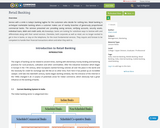
Service with a smile is today’s banking tagline for the customers who decide for nothing less. Retail banking is archetypal marketable banking where a customer makes use of nearby branches of generously proportioned commercial banks. The services presented are: providing saving services, verifying accounts, security assets, individual loans, debit and credit cards, etc.Nowadays, banks are looking for substitute ways to bestow with and differentiate along with their varied services. Clienteles, both corporate as well as retail, are no longer excited to get in line in banks, or stay on the telephone, for the most fundamental services. They require and foresee to be competent to handle their financial transactions where and when they wish to.

For All Geography Student
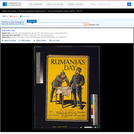
Poster showing the Kaiser and the King of Romania arguing while examining a map. Caption: The two forces. Kaiser: "So you, too, are against me! Remember, Hindenburg fights on my side." King of Roumania [sic]: "Yes, but freedom and justice fight on mine." Reproduced by special permission of the proprietors of "Punch." Title from item.
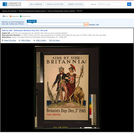
Poster showing Uncle Sam arm-in-arm with Britannia, accompanied by a lion and an eagle. At bottom: Mass meeting [blank space].

This course provides a global history of South Asians and introduces students to the cultural, social, economic, and political experiences of immigrants who traveled across the world. It studies how and why South Asians, who have migrated to America, Europe, Africa, the Caribbean and the Middle East, are considered a model minority in some countries and unwanted strangers in others. Through literature, memoirs, films, music, and historical writing, it follows South Asian migrants as they discovered the world beyond India, Pakistan, and Bangladesh.

Elleke Boehmer's work on the crucial intersections between independence, nationalism and gender has already proved canonical in the field. 'Stories of women' combines her keynote essays on the mother figure and the postcolonial nation, with incisive new work on male autobiography, 'daughter' writers, the colonial body, the trauma of the post-colony, and the nation in a transnational context. Focusing on Africa as well as South Asia, and sexuality as well as gender, Boehmer offers fine close readings of writers ranging from Achebe, Okri and Mandela to Arundhati Roy and Yvonne Vera, shaping these into a critical engagement with theorists of the nation like Fredric Jameson and Partha Chatterjee. This new paperback edition will be of interest to readers and researchers of postcolonial, international and women's writing; of nation theory, colonial history and historiography; of Indian, African, migrant and diasporic literatures, and is likely to prove a landmark study in the field.
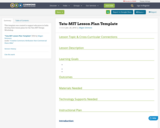
This template was created to support educators in India develop their lesson plans for the Tata-MIT Design Workshop.

A Book of Two Hundred 100-Word Stories
Word Count: 22538
(Note: This resource's metadata has been created automatically by reformatting and/or combining the information that the author initially provided as part of a bulk import process.)

A Book of Two Hundred 100-Word Stories
Word Count: 23973
(Note: This resource's metadata has been created automatically by reformatting and/or combining the information that the author initially provided as part of a bulk import process.)